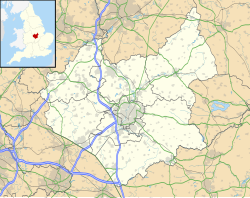| Lockington | |
|---|---|
 The coach house at Lockington Hall | |
Location within Leicestershire | |
| Civil parish | |
| District | |
| Shire county | |
| Region | |
| Country | England |
| Sovereign state | United Kingdom |
| Post town | DERBY |
| Postcode district | DE74 |
| Dialling code | 01509 |
| Police | Leicestershire |
| Fire | Leicestershire |
| Ambulance | East Midlands |
| UK Parliament | |
Lockington is a village and former civil parish, now in the parish of Lockington-Hemington, in the North West Leicestershire district of Leicestershire, England. The village is close to the Derbyshire border.


